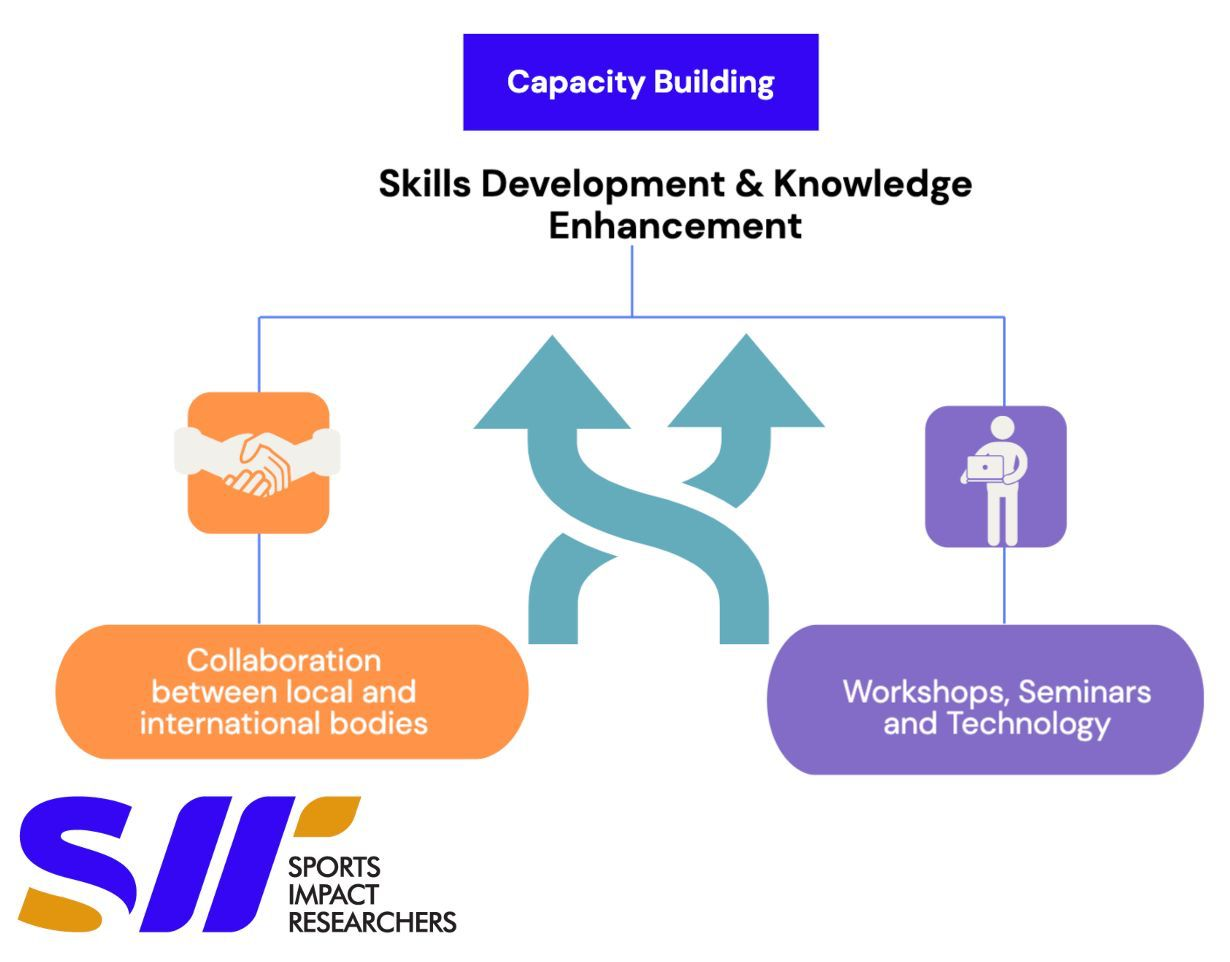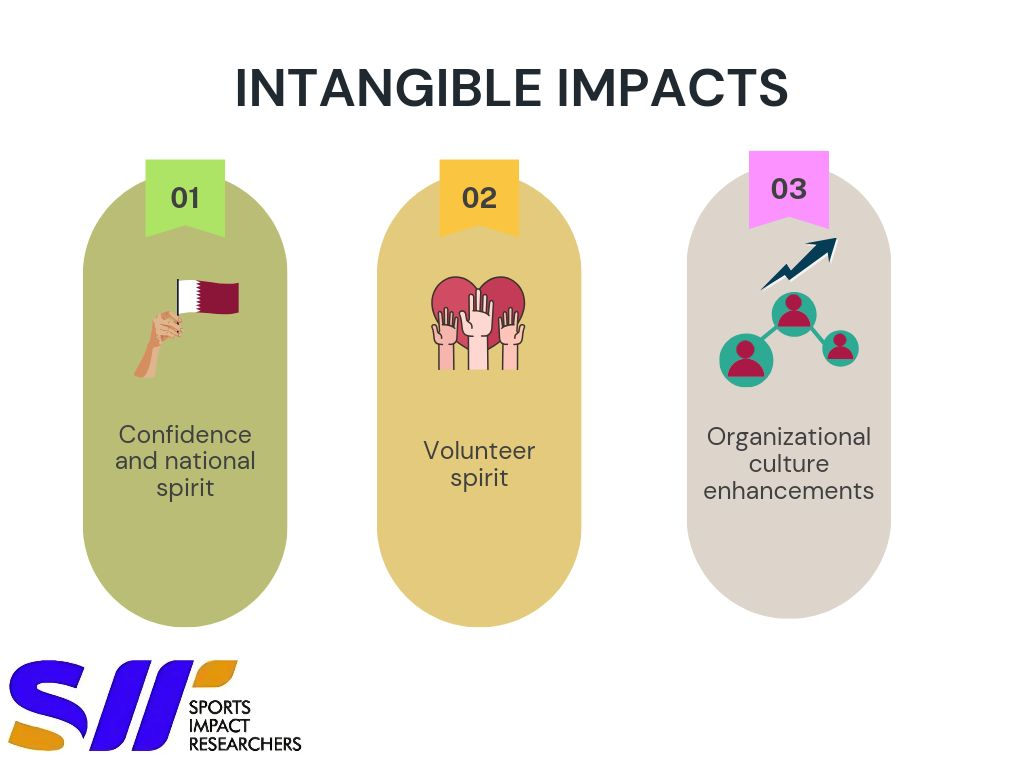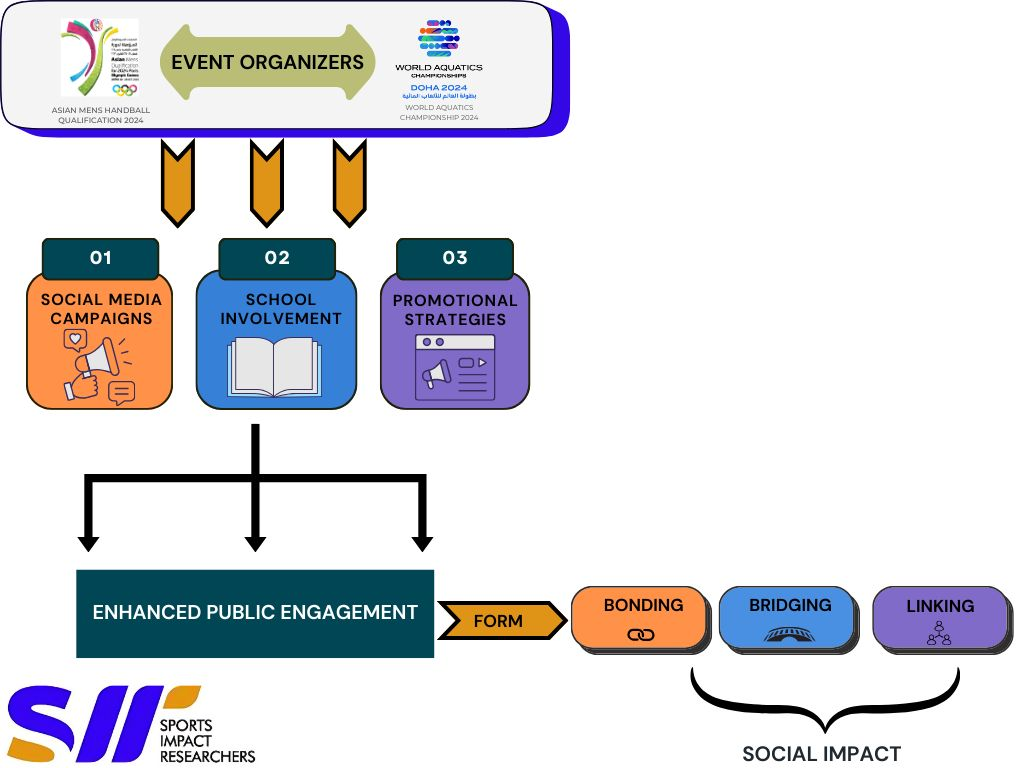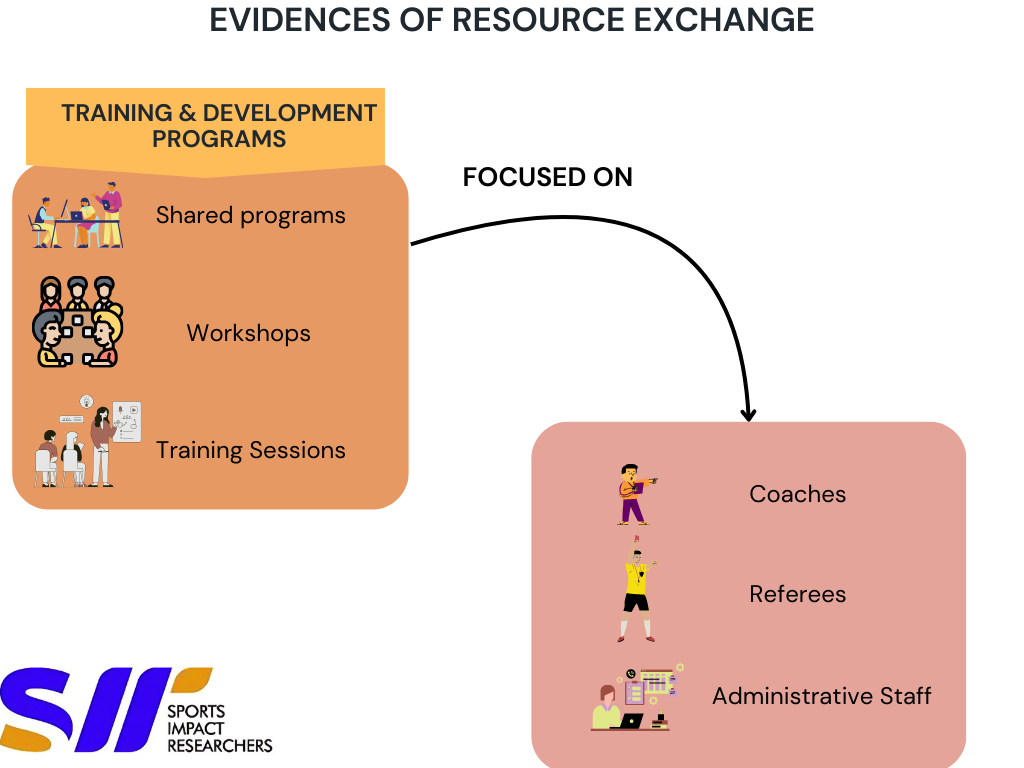Our research uncovers valuable insights into the public experience with the mega sports events hosted in Qatar.
Handball Event
Aquatics Event
Comparative Growth
Impact Relationship Model
This model illustrates the interconnected relationships between different types of impacts in mega sports events, showing how cognitive and affective experiences lead to individual and social outcomes.
- In both events, individual impact shows a strong, positive, and highly significant relationship with support for hosting mega sport events.
- For the handball event, the three dimensions of social capital (bonding, bridging and linking) stay close but they are still below the agreement point.
- From the handball event to the aquatics event, there was a 5.44% increase in the mean agreement score for bonding social capital.
- For both handball, and world aquatics events, individual impacts can explain intentions of support for similar events in the future, but social impacts cannot.
Factor Comparison Between Events
| Factor | Handball Event | Aquatics Event | Difference |
|---|---|---|---|
| Cognitive Experiences | 4.10 | 4.31 | +0.21 |
| Affective Experiences | 4.16 | 4.32 | +0.16 |
| Individual Impacts (Human Capital) | 4.01 | 4.20 | +0.19 |
| Social impacts | 3.59 | 3.72 | +0.13 |
| Support | 4.21 | 4.25 | +0.04 |
Our qualitative research reveals several key themes regarding the impact of mega sports events in Qatar.
Capacity Building
- Collaboration between local and international bodies facilitates knowledge exchange, enhancing both practical and technical skills.
- Workshops, seminars, and the use of technologies like VAR (video assistant referee) helped build technical and administrative skills among officials and staff.
- Capacity building could be further strengthened through more structured training programs and better knowledge transfer mechanisms.
- There is a call for a holistic approach to capacity building which includes intangible outcomes like volunteerism, social cohesion, and economic benefits in the strategic planning process.
Intangible Impacts
- Mega Sport Events enable cross cultural exchanges and community involvement as part of social connections which shape organizational culture and national pride.
- Intangible benefits, such as national pride, volunteerism, and public engagement, are widely recognized but underutilized.
- This suggests that while these benefits exist, there is a lack of structured mechanisms to measure and capitalize on them for long-term strategic growth.
Social Interaction
- Hosting well-organized events enhanced public engagement, particularly through social media campaigns, school involvement, and promotional strategies.
- Challenges such as limited media coverage and the need for more consistent audience engagement were noted, especially in less popular sports like handball.
- There is also a need to formalize and institutionalize the learning outcomes of these events into structured programs.
- Social capital, including bonding, bridging, and linking social networks, was formed through public and organizational engagement with the events.
Resource Exchange
- Resources are the backbone of capacity building and can be tangible or intangible.
- Mega sport events can facilitate the exchange of intangible resources, such as knowledge and skills.
- Mega sport events may be an opportunity to secure tangible resources from various funding sources.
- Resource exchanges are evident through shared programs, workshops, and training sessions.
- There is significant evidence of resource sharing, especially in training and development programs aimed at coaches, referees, and other administrative staff.
Resource Types and Their Value
Different resource types provide utility value as well as exchange value. Each type plays a crucial role in the success and impact of Mega Sport Events. The table below provides brief explanation of resource types and their value.
| Resource Type | Utility value | Exchange value |
|---|---|---|
| Moral | Intangible qualities that enhance the ethical standards of the event. | Public involvement that furthers the event's legitimacy and support. |
| Cultural | Artefacts and cultural products intrinsic to the event's heritage. | Tangible items that represent exchange of cultural goods and knowledge. |
| Social-organisational | Infrastructures, social networks, and organisations. | Purpose-built facilities and networks that enhance the social and organizational infrastructure. |
| Human | Hard and soft skills of event stakeholders (volunteers, staff and athletes). | Spectacle production from volunteering, spectating, and experience sharing. |
| Material | Financial and physical capital that serves as foundation for event hosting and organization. | Acquisition and deployment of material resources leading to enhanced NSO capabilities. |




